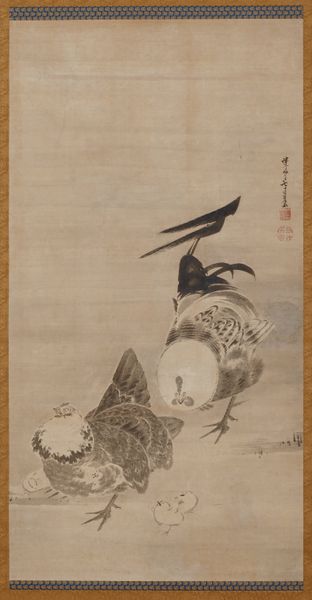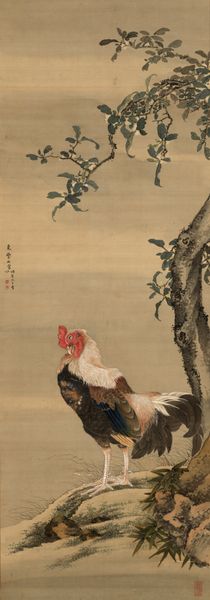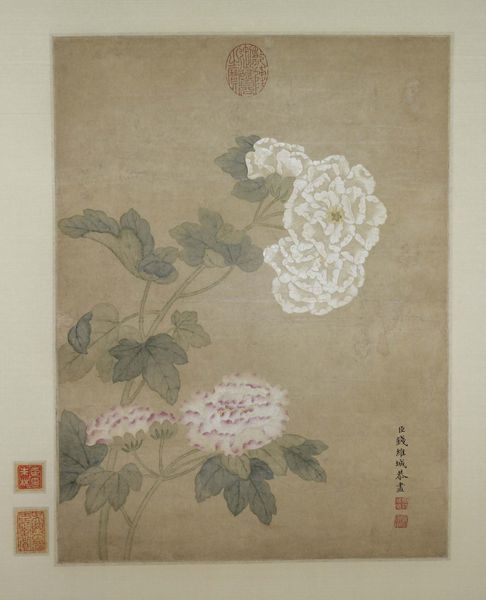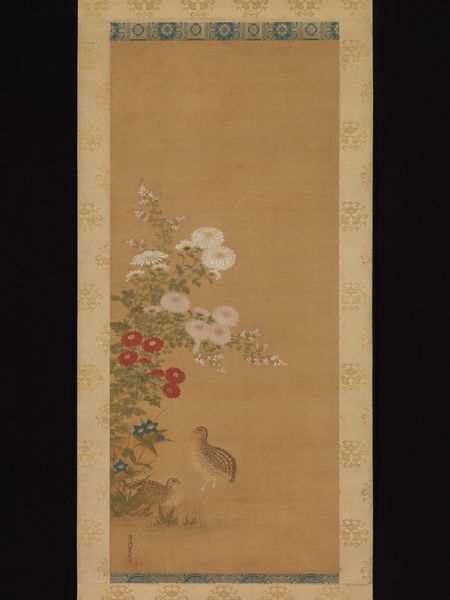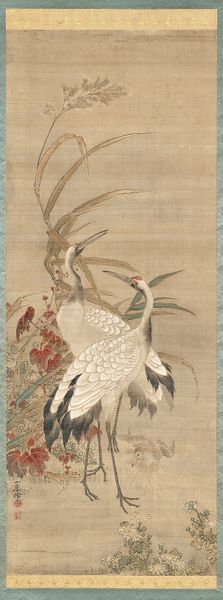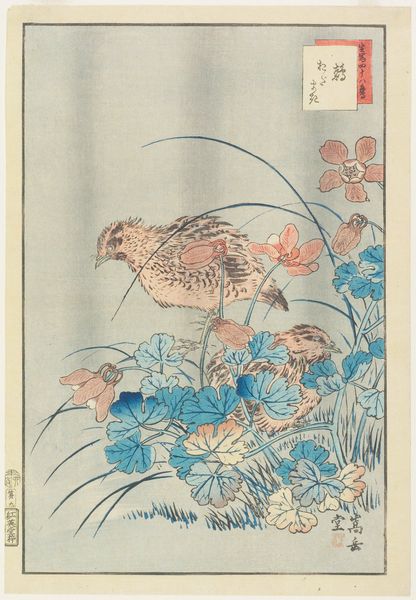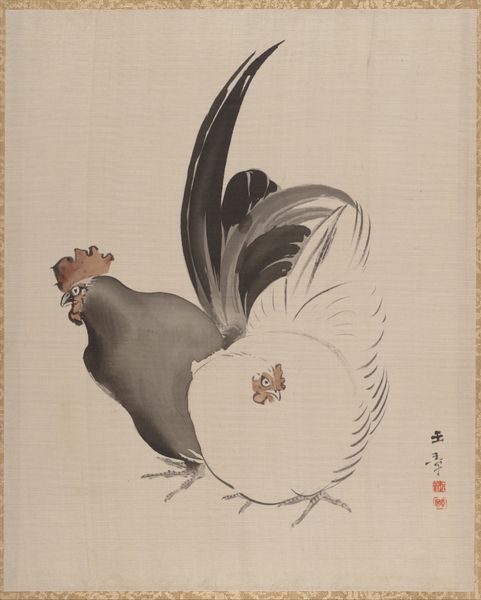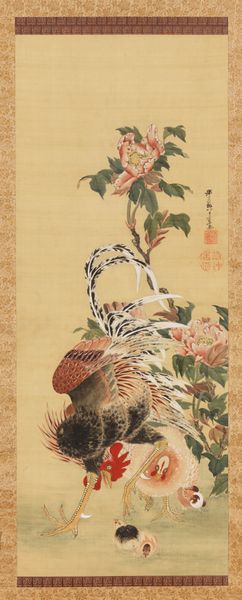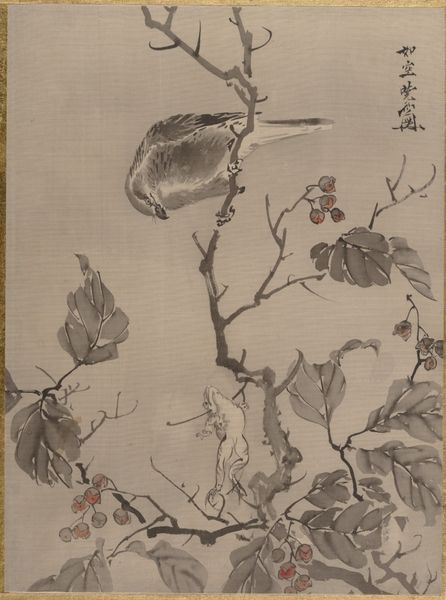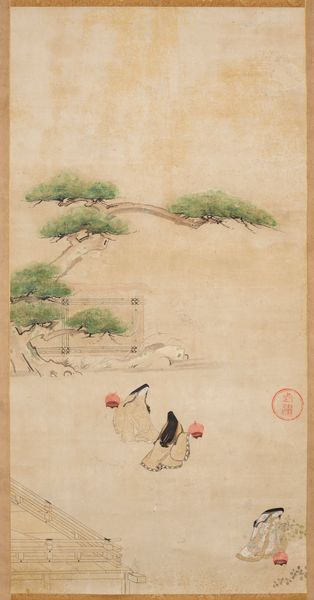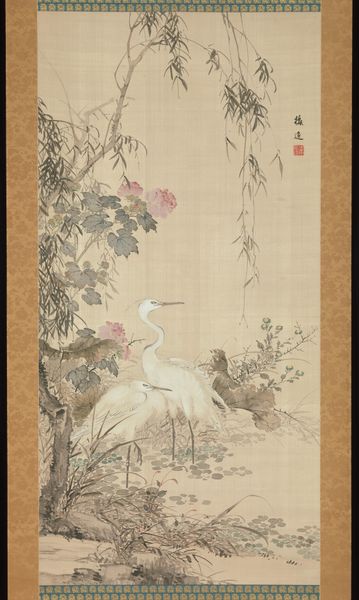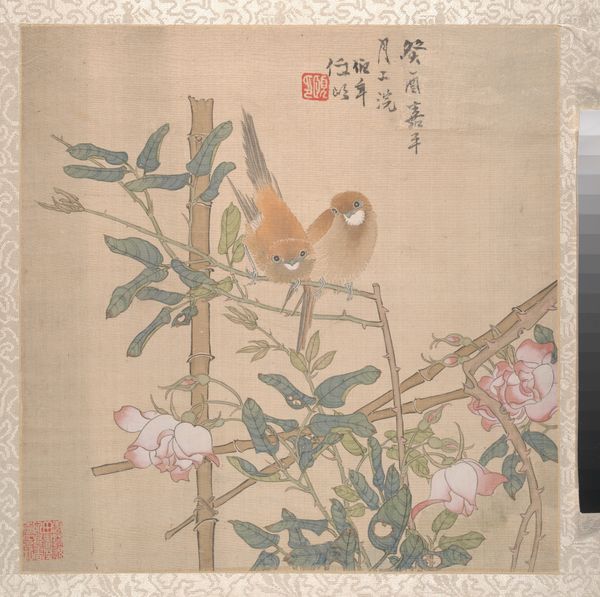
watercolor, ink
#
water colours
#
animal
#
asian-art
#
landscape
#
ukiyo-e
#
watercolor
#
ink
#
watercolor
Dimensions: 34 7/8 × 12 3/8 in. (88.58 × 31.43 cm) (image)61 3/8 × 16 13/16 in. (155.89 × 42.7 cm) (mount, without roller)
Copyright: Public Domain
Curator: Welcome. Today, we’re looking at Shiba Kōkan's "Rooster with Rose," an ink and watercolor piece dating from the late 18th to early 19th century. What are your first thoughts? Editor: It feels strangely... regal. The rooster dominates the composition, and yet there's a softness too, especially in the floral details. It’s quite evocative, even on first glance. Curator: The artist, Shiba Kōkan, was a pivotal figure, who integrated Western painting techniques into traditional Japanese Ukiyo-e art. This blend really comes across here. The meticulous detail in the rooster juxtaposed with the more atmospheric background shows that nicely. Editor: Absolutely, that integration is what jumps out. Given Kōkan’s interest in Western art and science, how was a figure like a rooster framed culturally at the time, and does Kōkan shift or challenge any of those traditional readings? Curator: That’s a really important question. The rooster, often associated with masculinity, vigilance, and even courage in different cultures, takes on an interesting twist. He is placed in proximity with soft, feminine flowers that perhaps adds layers of meaning to our reading of that masculinity, not necessarily challenging it, but definitely commenting on it. Editor: That brings forth fascinating tensions. I think understanding such images in the broader socio-political framework is very important; how the depiction of the rooster – a symbol of patriarchal power perhaps – in proximity with the roses may have reinforced or perhaps contested certain norms within society is worthy of inquiry. Curator: The rise of the merchant class during the Edo period enabled greater cultural exchange and commissioned artwork. What would a patron hope to gain from displaying such artwork publicly? Editor: I wonder if the patron found that balance particularly compelling – strength with grace. Perhaps it signaled an aspirational stance: embracing change while remaining rooted in tradition. Maybe it allowed new narratives to flourish or gave some fresh readings of classical allegories. Curator: Yes, exactly! That tension and integration may very well be its greatest impact. It bridges seemingly disparate concepts and reminds us of the complexities within even seemingly simple representations. Editor: It speaks to the multilayered experience of identity and the fluidity inherent to cultural symbiosis, I think. It's always worth unpacking the expectations and negotiations occurring in front of, and behind, the scenes. Curator: Precisely. Well, hopefully our reflections provided food for thought on what a piece like “Rooster with Rose” communicates on multiple levels. Editor: A wonderful look at an artwork which merges distinct influences that speak to us even today.
Comments
No comments
Be the first to comment and join the conversation on the ultimate creative platform.
